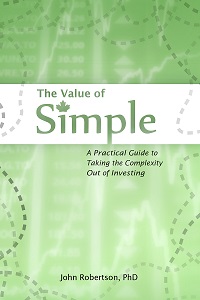Lab-Grown Meat
August 23rd, 2013 by PotatoMeat is an interesting and contentious meal choice. I’m personally a vegetarian, but a lacto-ovo one. I don’t have any particularly strong moral objections to using animals for human purposes: though I personally would prefer not to get involved in the process, I don’t throw a fit every time a friend has a BBQ (and my daughter is an omnivore until she decides otherwise). Yet I think people eat vastly too much meat. So many animals raised just for food, it’s so wasteful. Grazing animals can better make use of marginal farm/pastureland/scrub, but many acres of prime farmland is also given over to raising animals or growing feed for them. A laying hen can produce hundreds or thousands of eggs in its lifetime, but you consume way more chicken than that ratio of eggs:meat would suggest should be in your diet (generally you don’t eat the old egg-layers, you grow chickens just for meat and a separate group for eggs that you then feed to your dog).
For cows, it takes 5-100 times as much inputs like land, water, fossil fuels, and grains to make a pound of beef as it does to make a pound of vegetarian feed (in some reports these figures are adjusted for the protein content, so a report that says that it takes 10 pounds of vegetable protein to make 1 pound of beef protein may mean that ~100 pounds of feed went into the pound of meat). The rough rule of thumb I have heard is that we can feed about 10 times as many people on a vegetarian diet as a heavily meat-based one given the same input constraints. Whatever the exact number is, it’s a lot: there’s a fair bit of waste putting a cow between you and your food. I like to cut out the middle man.
The announcement that lab grown meat has been made (and eaten) made the news recently, spurring a lot of speculation about what the future will bring. I think it will be interesting, particularly for those simultaneously interested in animal cruelty and eating hamburgers, but I don’t think this is ushering a new paradigm of how we feed ourselves, and it’s not an immediately apparent investment opportunity.
The big question in my mind is what will the inputs be under the lab-grown scenario? Is there a business case there?
Land: One of the big advantages of lab-grown meat is that you don’t need to waste all that space letting the animal move around. You can pack the meat in close and even stack the building up with multiple stories, putting a lot of production into a small footprint. However, land is not expensive. It perhaps is not right, but anyone can just go and buy up farmland — prime farmland — and plop a condo on it, and most of the cost will still come from the construction process. So saving land is great, but we simply don’t value it enough right now to have this become a factor. Indeed, the need for infrastructure will likely make this way of producing a hamburger much more costly than just letting herds of cattle roam across the foothills of Alberta, and the capital investment required will likely keep many from making the plunge out of curiosity.
Water: I honestly don’t know where all the water is used in cattle farming, the reports suggest ridiculous amounts of it in use. Are the cows being bathed nightly? Anyway, water use will likely decline, but unless these meat factories get built in the boonies the water expense will likely remain unchanged as expensive, treated city water gets used.
Feed: Here is my big question. By not growing a full cow (just the meaty parts), and by just growing it long enough to harvest (rather than burning up resources in ongoing metabolism as the cow wanders around the fields day after day for months and years on end), there should be a big gain in the ratio of feed inputs to meat outputs. But it’s still not going to be very close to 1:1 — there are still inefficiencies in growing muscle tissue. There might be a decent efficiency between the growth medium energy and the meat-like substance protein content, but the question is whether that gain helps us any when you consider the full chain. With a full cow you just shovel a bucketful of corn/hay/wheat/oats into a trough and let the cow do its job. With a lab-grown collection of cells you will have to predigest the grain inputs through some kind of process to produce a sterile nutrient solution. What losses and inefficiencies will be associated with that value chain?
I doubt that having a disembodied bovine stem cell grow a muscle cell in a vat is going to come anywhere near the efficiency of eating some corn and growing a muscle cell yourself. Perhaps the ratio will come down, from say 100:1 to 10:1, but given the other costs I don’t think that makes a business case. I suspect that, at the end of the day, there will be next to no advantage here: 100 pounds of unprocessed grains may be cheaper and less resource intensive than distilling 10 pounds of grains down to soluble carbohydrates and an osmotically balanced protein slurry.
Other inputs: What antibiotics and growth hormones will be needed to keep these cells alive and stimulate them into growing? There won’t be as many fossil fuels needed to drive trucks and manure-spreaders, but what about the electricity needs of the incubators and buildings? What of the plastics and glassware?
Manpower: How educated will the meat rustlers of the future have to be? How many cowboy technicians will we need per pound of beef, versus farmhands per pound the old way, and what wages and benefits will they demand?
I simply have trouble seeing this as the future of food.
Food is cheap. Fundamentally it is the most basic and essential need of every person — even the poorest — and we go through a lot of it. I don’t see how lab-grown meat will come close to the price of traditional meat. Even with scaling up and industrializing the process in a factory, will this be competitive? There might be a niche market for PETA members to get their guilt-free burger fix, no matter the price, but will it truly become an industry?
In some dystopian future where process efficiency trumps capital requirements, maybe. But if we’re in a world that’s down to counting every last grain of wheat, why not just eat the plant matter ourselves?
Now, lab-grown organs are not so different from lab-grown meat (indeed, just a specialized form of lab-grown meat). But people will be willing to pay vastly more per pound of life-saving kidney than they would for mediocre appetite-satisfying hamburger. So while I don’t think lab-grown meat will be a food source to count on soon, lab-grown organs might be here sooner (despite the added complexity). Indeed, if lab-grown meat is to become a viable business, it will likely depend on innovations and technologies developed for organ regeneration.


 Questrade: use QPass 356624159378948
Questrade: use QPass 356624159378948 Passiv is a tool that can connect to your Questrade account and make it easier to track and rebalance your portfolio, including the ability to make one-click trades.
Passiv is a tool that can connect to your Questrade account and make it easier to track and rebalance your portfolio, including the ability to make one-click trades.